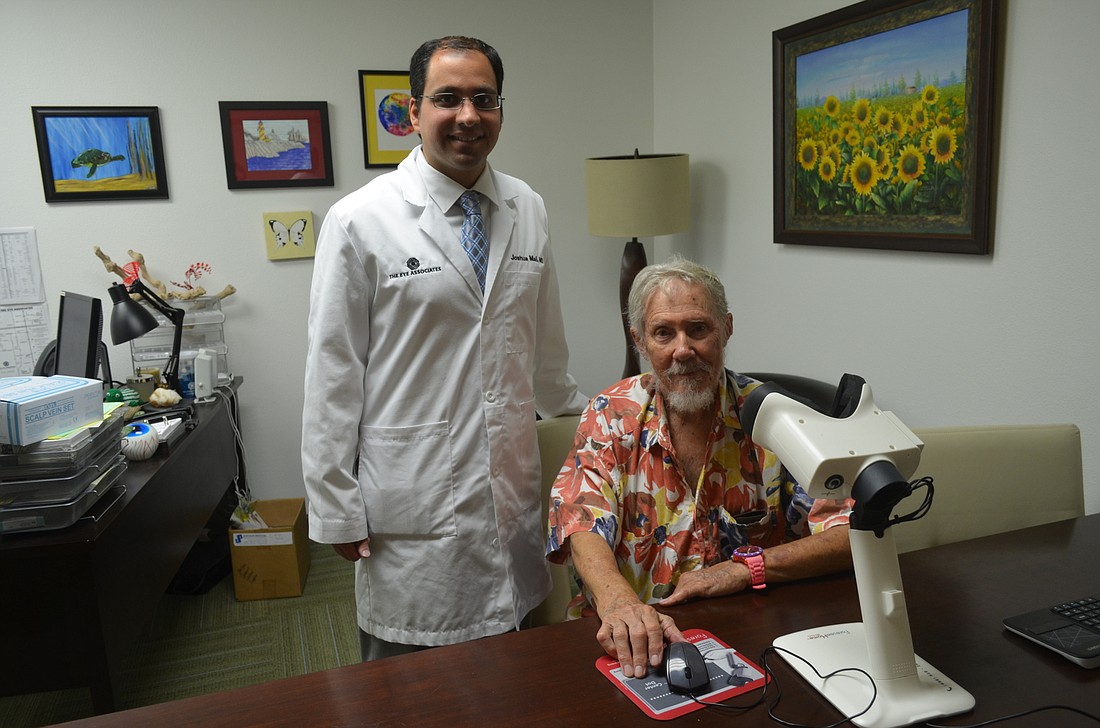- May 8, 2024
-
-
Loading

Loading

With more than 2 million people in the U.S. diagnosed, chances are you know someone who suffers from age-related macular degeneration (AMD).
The condition causes blurred or lack of vision and is the leading cause of vision loss in those 60 and older. Until now, there was no at-home monitoring system for the progressive disease.
The ForeseeHome AMD Monitoring Program allows patients at a high risk for developing wet AMD, the more severe form, to monitor their progress at home. It is approved by both the Food and Drug Administration and Medicare.
“It’s the only FDA-approved device for any kind of eye condition,” said Dr. Joshua Mali, a retina specialist at the Eye Associates in Sarasota. “It’s exciting.”
Since it was approved by Medicare in February, Mali has written more than 50 prescriptions for the device.
Qualified patients usually have dry AMD, which makes up 90% of AMD cases. The dry form can progress to the more severe wet form, which the machine tries to catch in its early stages.
“With AMD, you can lose vision pretty quickly,” Mali said. “If we catch it early, we’re able to preserve vision.”
Patients use the monitoring device at least eight times per month. While looking into the device, a white dot appears, which the patient should focus on. Then, a line appears with some distortion, and the patient has to click on the warped part of the line. The process takes three minutes per eye.
If the device catches any sort of change, it notifies the doctor immediately.
“Our technology has caught up with us,” Mali said. “We’re not relying on a lined piece of paper anymore. It’s like going from a bike to a car.”
There are several risk factors for AMD, advancing age, genetics and smoking all increase the risk of developing AMD. The condition also tends to affect a greater portion of fair-skinned patients.
“I think after age 40, everyone should have a dilated eye exam,” Mali said. “It’s the first step to evaluate, and we go from there. The earlier we can find AMD, the better. I also encourage all of my patients to stop smoking. Diet and exercise are also key.”
Sarasota resident David Peirick, 81, has been a patient at Eye Associates for five years and has used the ForeseeHome machine for six months.
“I’m a painter and a sculptor,” Peirick said. “I don’t want to lose my sight. It’s a good thing Medicare approved it, so you don’t lose your vision. If I didn’t have this, I would be more at risk.”
Peirick is spending his summer months in Maryland, and because the machine notifies Dr. Mali of any changes, he is still able monitor Peirick despite being 1,000 miles away.
“It’s helping because I can stay in touch with the doctor even when I’m not here,” Peirick said.
Peirick, whose left eye has wet AMD and right eye has dry AMD, uses the machine every day. He leads a healthy lifestyle and walks three miles each morning and eats all organic food, but because one eye is wet, his other eye has a high risk of also turning wet.
“He’s just doing fantastic,” Mali said. “He’s an artist and sculptor, and he needs his vision. My job is to keep it that way. Keeping people like David productive helps society. This gives him the best quality of life possible.”